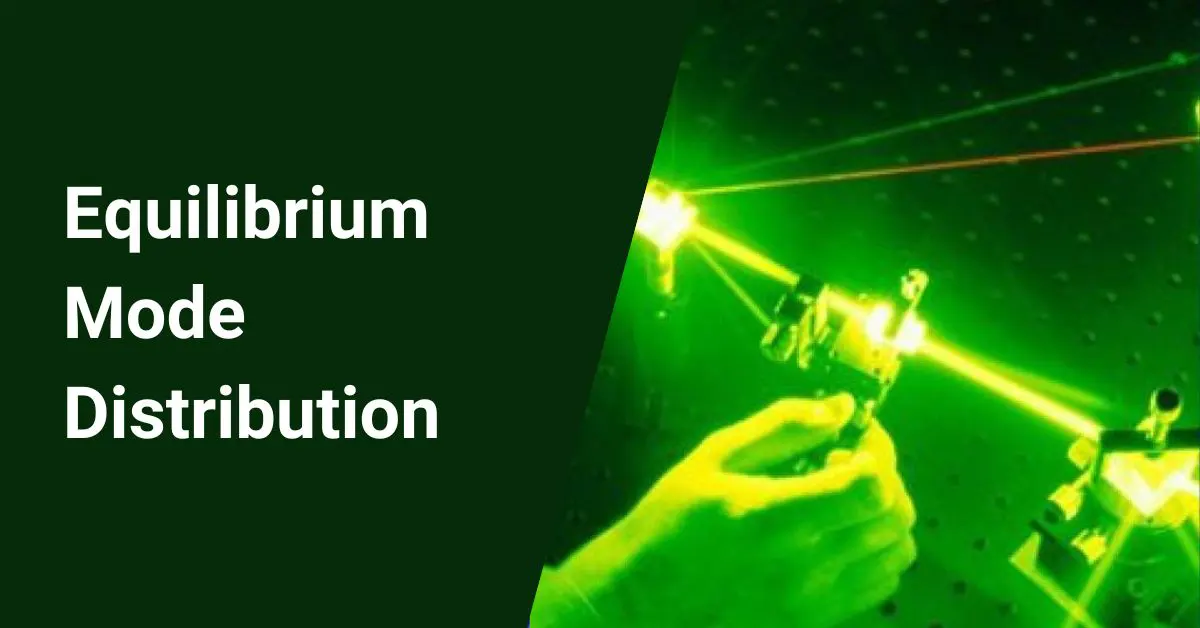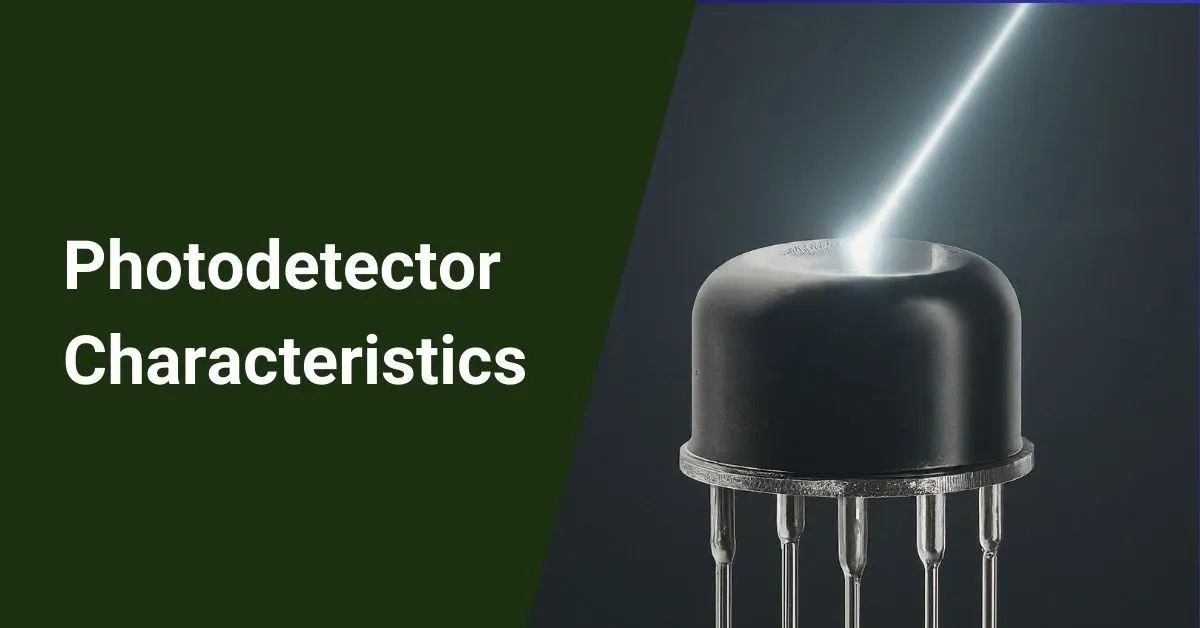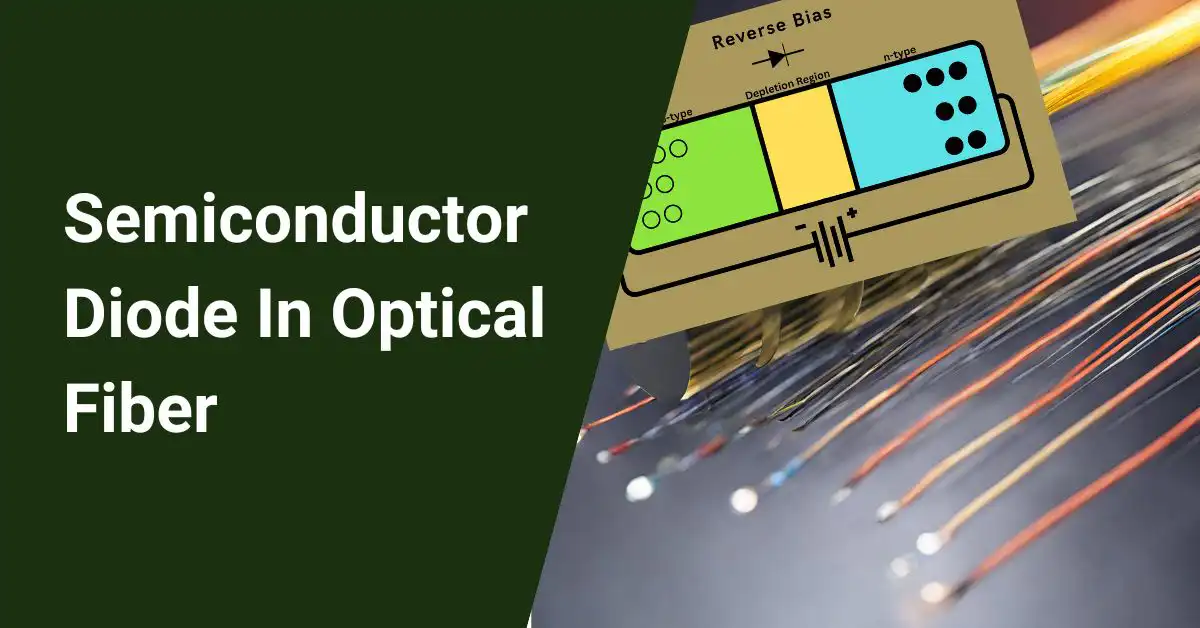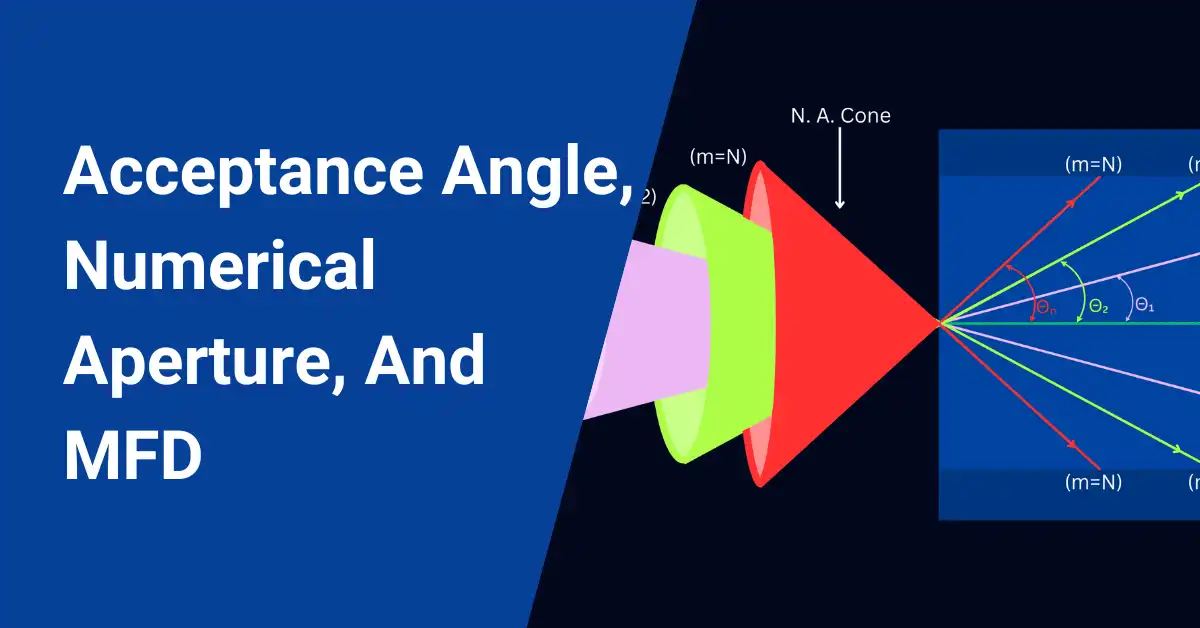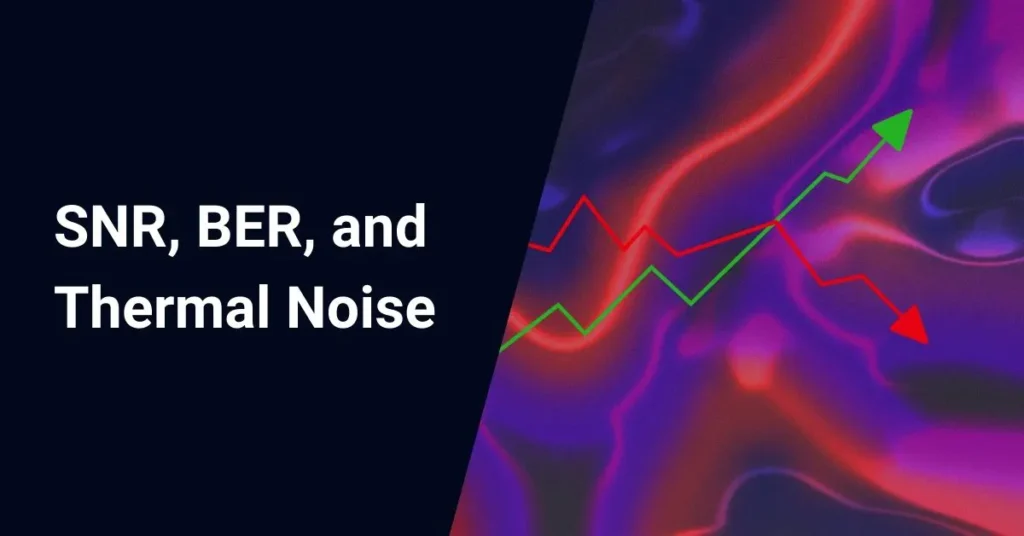When light travels through an optical fiber, it can take different paths called modes. However, not all modes propagate light efficiently. Over distance, light will transfer between modes until it reaches equilibrium mode distribution (EMD).
Table of Contents
Why EMD Matters
Equilibrium mode distribution (EMD) impacts optical fibers in two key ways:
- Fiber attenuation
- In a short, unterminated fiber section that has not reached EMD, loss of optical power is directly proportional to the length.
- However, in a long stretch of fiber that has achieved EMD, attenuation follows the square root of length. For instance, if a 1 km section at EMD has an attenuation of 1 dB, then a 4 km section would have 2 dB loss. The loss doubles each time the length quadruples rather than scaling linearly.
- Impacts other fiber properties
- Numerical aperture (NA) – NA depends on modal conditions. Overfilled launch conditions lead to a higher apparent NA.
- Active diameter – Similar to NA, active diameter grows as more modes are excited until EMD equalizes mode power distribution.
So, in summary, whether EMD has been established matters tremendously for loss characteristics and interrelated fiber attributes.
Overfilled vs Underfilled Fibers
Before reaching the balanced energy distribution of EMD, a fiber can be underfilled or overfilled:
- Overfilled launch
- Marginal, high-order modes end up carrying optical energy
- This energy dissipates quickly over a short distance.
- Light-emitting diodes (LEDs) tend to overfill fibers.

- Underfilled launch
- Only lower-order modes nearest the fiber core center carry light
- Lasers often underfill by concentrating energy in low-order modes
- Over distance, some energy redistributes into higher-order modes

So LED sources tend to overfill while lasers underfill before equilibrium distribution is reached.
Reaching Equilibrium
The distance to achieve EMD depends greatly on fiber type:
- Plastic optical fibers establish equilibrium mode distribution in just a few meters
- High-quality, long-haul glass fibers require tens of kilometers to reach EMD.
For instance, a 20 km single-mode glass fiber link with a laser source would likely operate at EMD, while a short plastic fiber cable would not.
Overall, EMD determines many important fiber characteristics, so it’s critical whether equilibrium has been met.
What is the equilibrium in the distribution of power?
The equilibrium in the distribution of power refers to the equilibrium mode distribution (EMD) in an optical fiber.
At equilibrium mode distribution:
- Power is distributed evenly across the modes in the fiber that can propagate light efficiently.
- There is no longer any transfer of energy from higher-order modes to lower-order modes or vice versa. The power distribution reaches a stable equilibrium.
In particular:
- Lower-order modes near the center of the fiber core carry more optical power.
- Higher-order modes farther from the center carry progressively less power.
- Inefficient, lossy modes carry no power at equilibrium.
So, EMD means the optical power is stably distributed among only those fiber modes that can propagate light well. The power profile favors lower-order core modes and falls off gradually towards the edges of the core. Equilibrium is reached when this balanced, steady-state power distribution is achieved across the modes.
Examples of equilibrium mode distribution optical fiber
Here are some examples of optical fibers operating at equilibrium mode distribution (EMD):
- Single-mode fiber (SMF) – By definition, single-mode fiber only allows propagation of the fundamental LP01 mode. So SMF always operates at EMD, with all optical power concentrated in the single lowest-order mode.
- Multi-mode fiber (MMF) in long cable runs – In a long stretch of graded-index MMF, for instance, over 10km, the light will have coupled between modes enough times to reach EMD. Power gets distributed primarily among lower-order modes.
- MMF with selective launch conditions – Using controlled mode-selective launch into an MMF restricts light to fewer lower-order modes, allowing the fiber to operate near EMD conditions over shorter lengths.
- Plastic optical fiber (POF) in equilibrium – Unlike glass fibers, POF can reach EMD in just a meter or two. Over this short distance, the many modes excited by light sources like LEDs distribute until there is no further coupling.
- Any fiber with coherent source – Laser sources tend to couple light into only lower-order modes. So, fibers illuminated by lasers will transmit characteristics close to EMD.
Equilibrium mode distribution can be achieved over reasonable lengths in multi-mode glass and plastic optical fibers. Single-mode fibers always exhibit equilibrium distribution confined to one mode. Lasers also help force fibers toward EMD.
Summary
Reaching equilibrium mode distribution (EMD) is important for optical fibers because it determines key properties like attenuation and numerical aperture.
EMD occurs when power is evenly distributed across the fiber modes that carry light efficiently, with more power in the lower-order core modes.
The distance required to achieve EMD depends on the fiber-plastic optical fibers’ equilibrium within a few meters, while long-haul glass fibers may need tens of kilometers. Optical sources also affect whether a fiber is underfilled or overfilled initially.
Lasers tend to launch light into only lower-order modes, putting fibers closer to EMD over shorter lengths. In summary, establishing equilibrium distribution is crucial since it establishes stable performance characteristics for the fiber.
FAQ
What is the point of equilibrium?
EMD analysis helps predict how efficiently light propagates through the fiber by studying the stable power distribution among different modes under specific conditions. This is crucial for optimizing fiber design and maximizing transmission performance.
What is the equilibrium distribution curve?
An equilibrium distribution curve graphically depicts the power distribution among different LP modes in a fiber at a specific wavelength and launch condition.
Does equilibrium mean that the particles are evenly distributed?
Equilibrium in the context of optical fibers refers to a steady-state modal distribution, not the even distribution of particles. In this context, equilibrium means that the relative power distribution among modes remains constant, not that the power is evenly distributed among the particles.
What is the equilibrium distribution curve?
The equilibrium distribution curve is a plot of the mode power distribution as a function of the fiber length. It shows how the power in each mode changes with fiber length, reaching a constant distribution at the equilibrium length.
What does it mean if the equilibrium is to the left?
If the equilibrium is to the left, it means that the mode power distribution is more concentrated in the lowest-order modes, resulting in a higher fraction of power in these modes.


